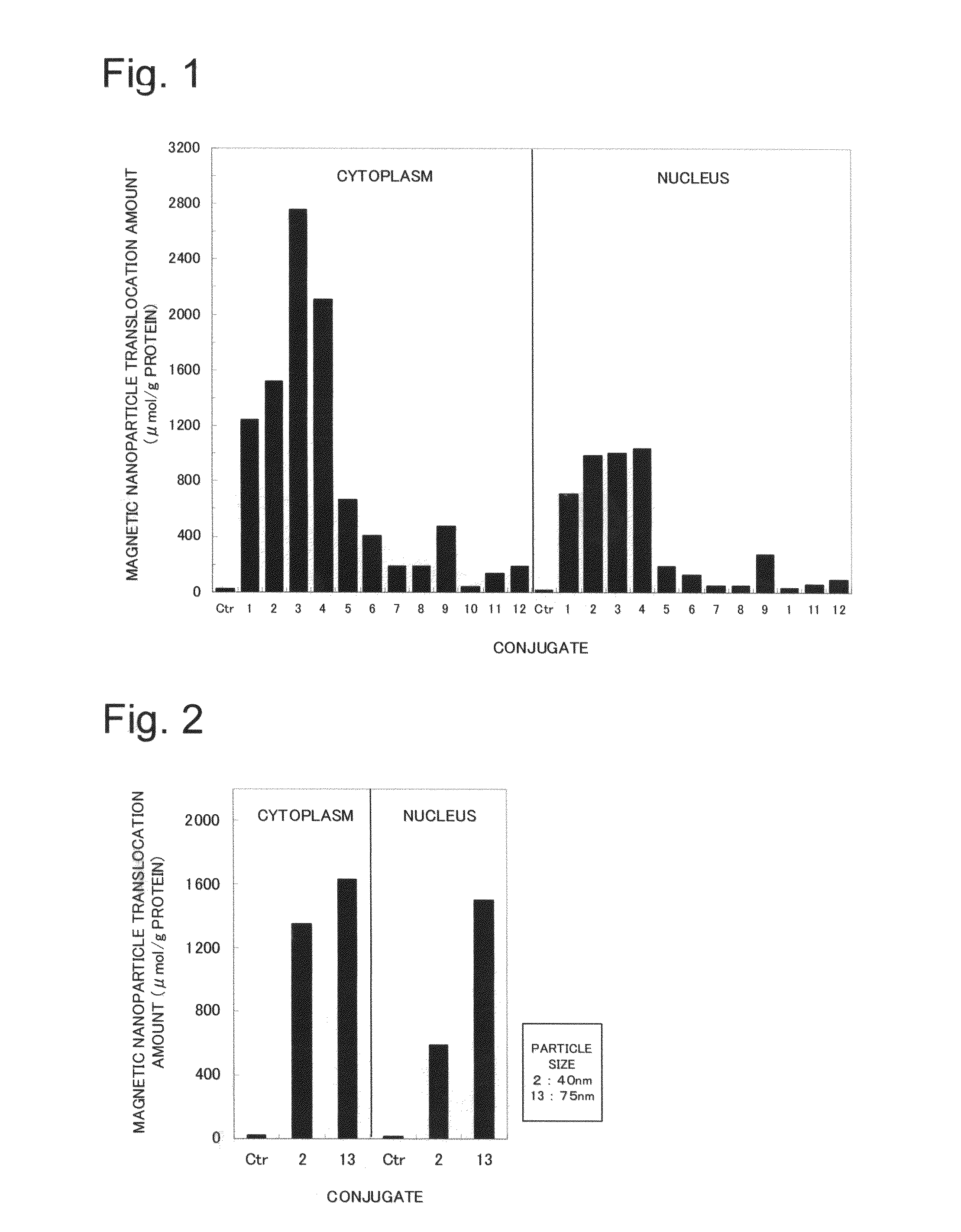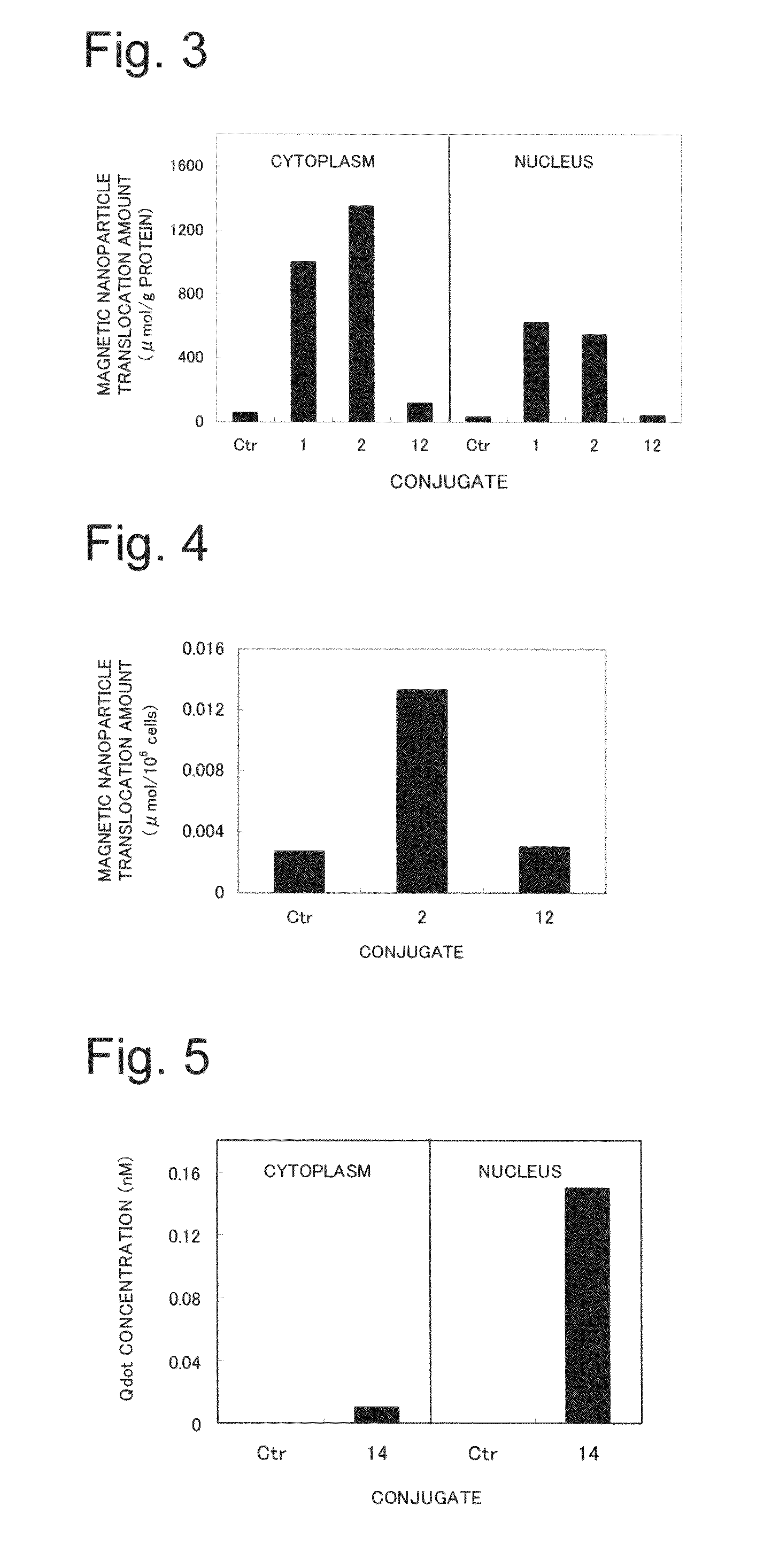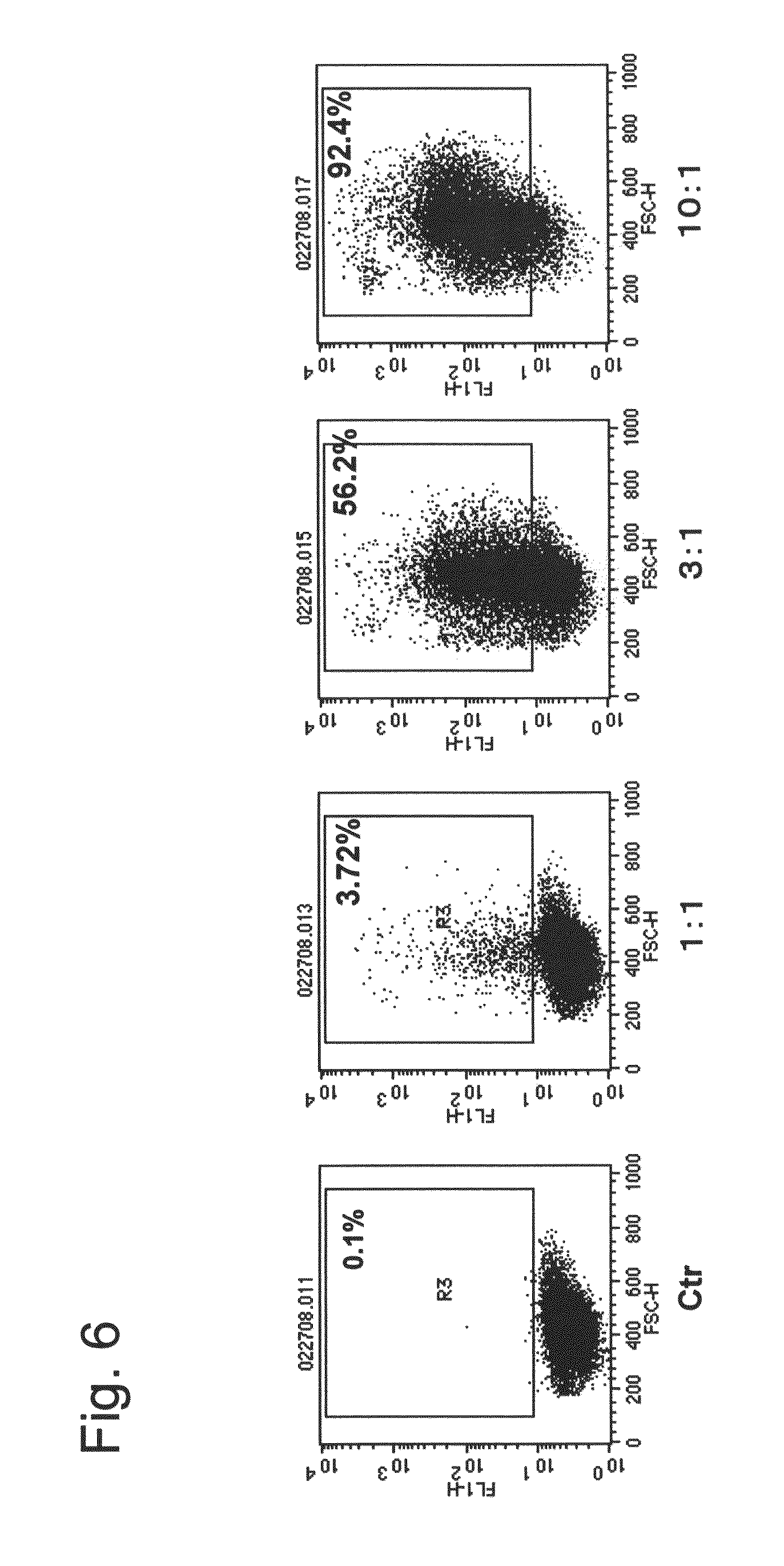Nuclear translocation peptide
a technology of nucleic acid and peptide, which is applied in the field of nuclear translocation peptide, can solve the problems of not having the amino acid sequence necessary, and not reaching practical application on an industrial scale, and achieves the effects of less cytotoxicity, less cost, and reduced cytotoxicity
- Summary
- Abstract
- Description
- Claims
- Application Information
AI Technical Summary
Benefits of technology
Problems solved by technology
Method used
Image
Examples
example 1
Synthesis of LR20 (Peptide 1)
[0079]A peptide synthesizer (Pioneer type from Applied Biosystems) based on the principles of solid phase synthesis was used, and automatic synthesis was carried out by programming the synthesizer for the 20 amino acid residue sequence of the above peptide LR20 and providing the set of amino acid reagents necessary for peptide synthesis of peptide LR20. After synthesis was completed, the peptide was separated from the carrier resin using TFA, and after the resin was removed, ether was added, followed by centrifugation (3000 rpm for 5 min), and the precipitated peptide was lyophilized to obtain the peptide. The molecular weight of the resulting peptide was measured by mass spectrometry (Voyager RP type from Applied Biosystems), the purity was measured from the peak area of HPLC analysis (Kanto Chemical Co., Ltd., Mightysil RP-18GP column, detection wavelength: 220 nm, eluent: 0.1% TFA / H2O), and it was confirmed that the resulting peptide was the LR20 pept...
example 2
Synthesis of LR20-CMDM
[0081](1) A reaction was carried out at room temperature by sequentially adding 8 mL of a 0.2 M sodium phosphate buffer solution containing 623 mg of 1-ethyl-3-(3-dimethylaminopropyl) carbodiimide HCl (hereinafter, EDC), 187 mg of N-hydroxy succinimide (hereinafter, NHS), and 22 mg N-ethyl amino maleimide•trifluoroacetate to 8 mL of CMDM (iron concentration: 20 mg / mL) with an overall diameter of 40 nm. After 20 h had elapsed, ultrafiltration (molecular cutoff 50 kDa) was performed, and unnecessary reagents were removed to obtain 28 mL of linker-bonded CMDM aqueous solution.[0082](2) A reaction was carried out at room temperature by adding 9.8 mg of LR20 (Peptide 1) to 10 mL of the linker-bonded CMDM aqueous solution obtained in above (1). After 20 h had elapsed, ultrafiltration (molecular cutoff 50 kDa) was performed, and the unbound peptide was recovered and quantified. The supernatant was diluted with water, 1.0 mg of cysteine was added, and a reaction was ca...
example 3
Synthesis of LR17 (Peptide 2)
[0084]Synthesis and analysis were performed in the same manner as in Example 1 except for programming of the sequence and providing the set of necessary amino acids to match the sequence of LR17, and the LR17 peptide was obtained thereby.
[0085]Mass spectrometry results: measured molecular weight 2150.25 (theoretical molecular weight: 2150.670), HPLC analysis: retention time 19.000 min (100.0%).
PUM
| Property | Measurement | Unit |
|---|---|---|
| diameter | aaaaa | aaaaa |
| diameter | aaaaa | aaaaa |
| diameter | aaaaa | aaaaa |
Abstract
Description
Claims
Application Information
 Login to View More
Login to View More - R&D
- Intellectual Property
- Life Sciences
- Materials
- Tech Scout
- Unparalleled Data Quality
- Higher Quality Content
- 60% Fewer Hallucinations
Browse by: Latest US Patents, China's latest patents, Technical Efficacy Thesaurus, Application Domain, Technology Topic, Popular Technical Reports.
© 2025 PatSnap. All rights reserved.Legal|Privacy policy|Modern Slavery Act Transparency Statement|Sitemap|About US| Contact US: help@patsnap.com



